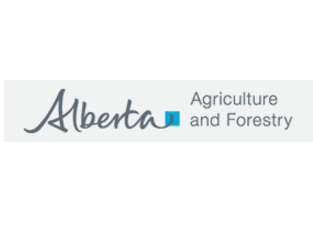Source: Alberta Agriculture and Forestry
Nitrate accumulation can become a problem when crops experience light frosts of -1 C to -2 C for even only a few hours during the night.
With frost warnings being issued and a report of frost in the northern part of the province, Barry Yaremcio, beef and forage specialist at the Alberta Ag-Info Centre, looks at nitrate accumulation in crops and how to manage it.
“These conditions damage the leaves of the plants but not the roots,” he explains. “During the next three of four days, the roots continue to send nutrients up the plant. The damaged plant is unable to use those nutrients, resulting in nitrate accumulation.”
“When we get a heavy frost of -5 to -6 C for 6 or 7 hours, the internal working system of the plant is completely destroyed, and it can no longer move water or nutrients. A killing frost means that the plants are dead, so nitrates won’t accumulate.”
“Light frosts experienced for only a few hours damage the plant but not the internal bundles that move water and nutrients up the stem. The injured leaves can’t use the nutrients effectively, and that is when there is the greatest chance of nitrate accumulating.”
Annual crops are the most susceptible to nitrate accumulation – oats being the worst – but also barley and wheat. Immature salvage canola crops cut for silage or greenfeed also have a tendency for nitrate accumulation.
“Alfalfa is a legume, and the nodules attached to the roots tend to hoard the nitrogen and only release as much as the plants require,” he says. “Nitrate accumulation in alfalfa is extremely rare.”
Application of nitrogen fertilizer or manure also has a significant influence on the susceptibility of the crops. High amounts of nitrogen fertilizer or manure increase the risk of nitrate accumulation.
“If fields have been used for swath grazing, winter feeding areas, have had high manure applications or high amounts of fertilizers applied in the spring, those fields are more susceptible to accumulate nitrate in the plants,” he explains. “If no fertilizer has been applied, or if it is an old grass field, those fields are not typically a problem.”
After a frost, the timing for cutting the field is a key factor in managing nitrogen accumulation. “If producers can get out in the field the day after the frost and cut it as quickly as they can, there should not be a problem,” he adds. “Nitrate levels increase and peak on the third or fourth day after a frost.”
If there is time for the plants to recover, and there is no additional frost to kill the plants, nitrate levels will decline and return to normal 14 days after the frost.
“It is either get out there within one or two days after the frost and cut very quickly, or wait 10 to 14 days before cutting the field,” says Yaremcio.
With some crops seeded late this spring, salvaging the frosted crop for silage is an option.
“Cutting, packing and chopping should be done the same as a crop that has not received frost,” he says. “If these practices are completed, nitrate levels in the silage should not decrease. Some references indicate that nitrate reduction is possible, but with further research, the reductions occurred when the silage was not packed properly and not covered. Thus, the quality of the final silage was greatly reduced. It is better to make good quality silage and mix it off with other feeds if necessary.”
“Work done in the early 1960s established 0.5% as the toxic level of nitrates in feed,” he adds. “This level was arrived at by administering sodium nitrate directly into an animal’s blood stream, but it established a false level of ingested nitrates. Forages do not have the ability to go immediately into the blood stream in a concentrated form. It takes 2 to 3 days for the material to be digested. Therefore, nitrates at levels of 0.7, 0.9 even up to 1.0% can be fed if introduced slowly and time is taken to acclimatize animals to that level of nitrates. Work with a nutritionist to develop a feeding program that does not put the animals at risk.”
Contact
To connect with the Alberta Ag-Info Centre:
Hours: 8:15 am to 4:30 pm (open Monday to Friday, closed statutory holidays)
Toll free: 310-FARM (3276)







Hi, I am doing an honours research project and as part of that am looking at how frost effects nitrate accumulation in canola. I am just wondering if there is any data or research papers which show the elevation of nitrate concentration post frost in forages as mentioned by Barry Yaremcio in the article above.